 I have traced my husband’s paternal line back to Anthony Siekman, who was born in Germany about 1821. I knew from his petition for naturalization that he arrived in the United States in 1852, but I did not know much beyond that. As the progenitor of this line in America, I have Anthony to thank for the surname I carry after marriage and the name my children will carry into the world. Perhaps this is the reason why I first took an interest in piecing together the details of his life, but what I discovered was a tragic story that led to more questions. Continue reading Bittersweet discoveries
I have traced my husband’s paternal line back to Anthony Siekman, who was born in Germany about 1821. I knew from his petition for naturalization that he arrived in the United States in 1852, but I did not know much beyond that. As the progenitor of this line in America, I have Anthony to thank for the surname I carry after marriage and the name my children will carry into the world. Perhaps this is the reason why I first took an interest in piecing together the details of his life, but what I discovered was a tragic story that led to more questions. Continue reading Bittersweet discoveries
Tag Archives: Brick Walls
More Moses Marcus
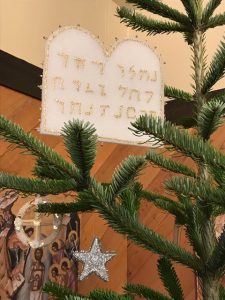
Last weekend I had an extremely fruitful session of something my husband and I call “Moses Marcussing.” While the Rev. Moses Marcus is not an ancestor or even a cousin of mine, he appears in my family tree as the father-in-law of my first cousin five times removed, and despite his infinitesimal kinship to me, I consider him one of the jewels in my genealogical crown.
Vita Brevis readers may remember a few details of his life contained in a tribute to his daughter Lelia, who was lost during a hurricane in 1875. Three years ago I was contacted by someone requesting details about her father, after they’d found information I’d provided for her memorial on Find A Grave. You can imagine the thrill of getting such a request, since I fancy myself the world’s foremost expert on the Rev. Moses Marcus. Continue reading More Moses Marcus
A missing Merrill
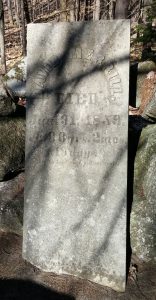
Alicia Crane Williams’s post earlier this week – about when an incorrect item was “published in a book” – is quite fresh in my mind as I contemplate a current genealogical problem. Last week I wrote about Gary Boyd Roberts’s research on a distant kinship between Meghan Markle and Prince Harry of Wales. There are several parts of Markle’s American ancestry that a group of us (including Gary and several genealogical colleagues) has been looking into, but the one that keeps coming up regards Meghan Markle’s great-great-great-great-grandfather David Merrill (1768–1859) of Holderness, New Hampshire.[1]
Numerous online trees claim that David Merrill was the son of Jacob Merrill and Elizabeth Wyatt, and this claim is even “published in a book”: The Makers of the Sacred Harp (Champaign, Ill., 2010): Continue reading A missing Merrill
The grafting trunk
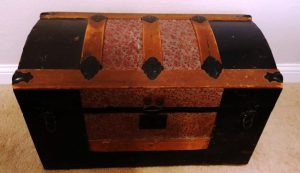 The clickety-clack of my great-grandmother’s ‘old lady shoes’[1] resonated as I toddled after her down the narrow hallway to the old trunk. There, in that back bedroom she and I would sit in the dark brilliance of polished woods, with the old trunk somehow beckoning us as if the face of some minor deity or oracle. Indeed, my great-grandmother treated the old trunk as if it held all the wonders of the world, which, in many ways, it certainly did (and still does…). Continue reading The grafting trunk
The clickety-clack of my great-grandmother’s ‘old lady shoes’[1] resonated as I toddled after her down the narrow hallway to the old trunk. There, in that back bedroom she and I would sit in the dark brilliance of polished woods, with the old trunk somehow beckoning us as if the face of some minor deity or oracle. Indeed, my great-grandmother treated the old trunk as if it held all the wonders of the world, which, in many ways, it certainly did (and still does…). Continue reading The grafting trunk
Bunching pensions
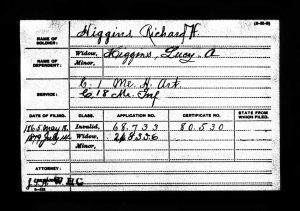 I wrote two years ago about the incredible value of Civil War pensions, but a recent example reminded me that occasionally just getting a valuable pension may be challenging as well. Whenever I realize a Civil War pension exists, whether for a book project or an article, I almost always request it, on the strong likelihood that it will provide further genealogical information, as well as substantial biographical data on the veteran’s life, his widow, and sometimes other family members. Continue reading Bunching pensions
I wrote two years ago about the incredible value of Civil War pensions, but a recent example reminded me that occasionally just getting a valuable pension may be challenging as well. Whenever I realize a Civil War pension exists, whether for a book project or an article, I almost always request it, on the strong likelihood that it will provide further genealogical information, as well as substantial biographical data on the veteran’s life, his widow, and sometimes other family members. Continue reading Bunching pensions
The thousandth post
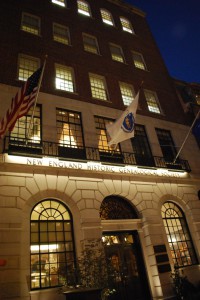 Today marks the one-thousandth Vita Brevis post since the blog launched in January 2014. The blog’s pages have been accessed more than one-and-a-half million times, and by my (not very scientific) count the following eighteen posts have led the field, read by more than one hundred thousand readers.
Today marks the one-thousandth Vita Brevis post since the blog launched in January 2014. The blog’s pages have been accessed more than one-and-a-half million times, and by my (not very scientific) count the following eighteen posts have led the field, read by more than one hundred thousand readers.
By far and away the most-read post at Vita Brevis is Chris Child’s August 2014 account of Robin Williams’s maternal ancestry. The circumstances of Williams’s death, and the affection he had inspired in millions of Americans, made the post a place to stop and reflect about what he had meant to members of the genealogical community. Continue reading The thousandth post
Fadeaway

I’ve always wanted to know more about the life of my great-grandmother Opal Young (1895–1978). To do this, I decided to see what researching her siblings might reveal about her. By and large, information about her siblings has been limited to meager ‘raw data.’ An interesting exception to this has been the life of my great-grandmother’s brother John Alfred Young (1890–1960). He is called Johnnie on the back of this Hitchcock-like cameo – it is the only known photograph to show him.[1]
Johnnie Young came to California about the time his sister Opal did in the late 1920s. Their lives as children back in Kansas seems to have been pretty normal – other than there were a LOT of people living with them in the Young household.[2] Continue reading Fadeaway
Oh! Susanna!

“Oh! Susanna…” No, thankfully, not Mr. Foster’s “Susanna”![1] Rather, this particular “Susanna” is one who has been bound up in the ‘primordial soup’ of my Chesapeake Bay ancestry for (at least) the last six generations. The identity of my Susanna has only come to light within the last several years. No one had ever heard of her before. She had been all but forgotten – since her death in 1863.[2]
Oddly, the most evident clue that Susanna ever lived at all was hidden in plain sight. Her son, my great-great-grandfather John Henry Record,[3] completed his pension application stating that his father had died when he was four years old – an event which coincided with his being “bound out.”[4] He wrote these statements in the 1890s, and reading his words through the years it was generally assumed (given these terrible circumstances for a four-year-old boy) that his mother must have also been deceased at that date. In fact she was not. Continue reading Oh! Susanna!
‘I was much amazed’
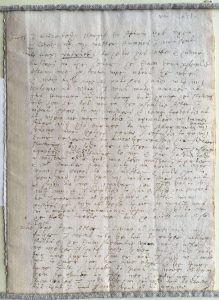
Captain Daniel Patrick was a well-known and powerful figure in the Massachusetts Bay Colony of 1640. He had been a “common soldier in the Prince’s guard” in Holland, and that experience was sufficient for him to be appointed Captain of Militia in Massachusetts Bay. He commanded 40 soldiers in the Pequot War, and he and his company were notable for executing the “fighting age” Pequot male prisoners captured near present-day Ledyard, Connecticut, on 5 July 1637. Captain Patrick was clearly a formidable character.
He was also a well-known philanderer and eventually departed the colony: “For though he had a wife of his own, a good Dutch woman and comely, yet he despised her and followed after other women and perceiving that he was discovered, and that such evil courses would not be endured here, and being of a vain and unsettled disposition, he went from us… ” Continue reading ‘I was much amazed’
Things that go bump in the night

As genealogists and family history researchers, we deal with what our ancestors have left behind. But what about the ancestors who stayed behind? We all know that when we blissfully, stoically, and persistently work at finding and understanding our forebears, they will look over our shoulders, tweak our brains, and sometimes yank on our chains to get their stories told. Mine serve up apple pie and coffee!! Continue reading Things that go bump in the night